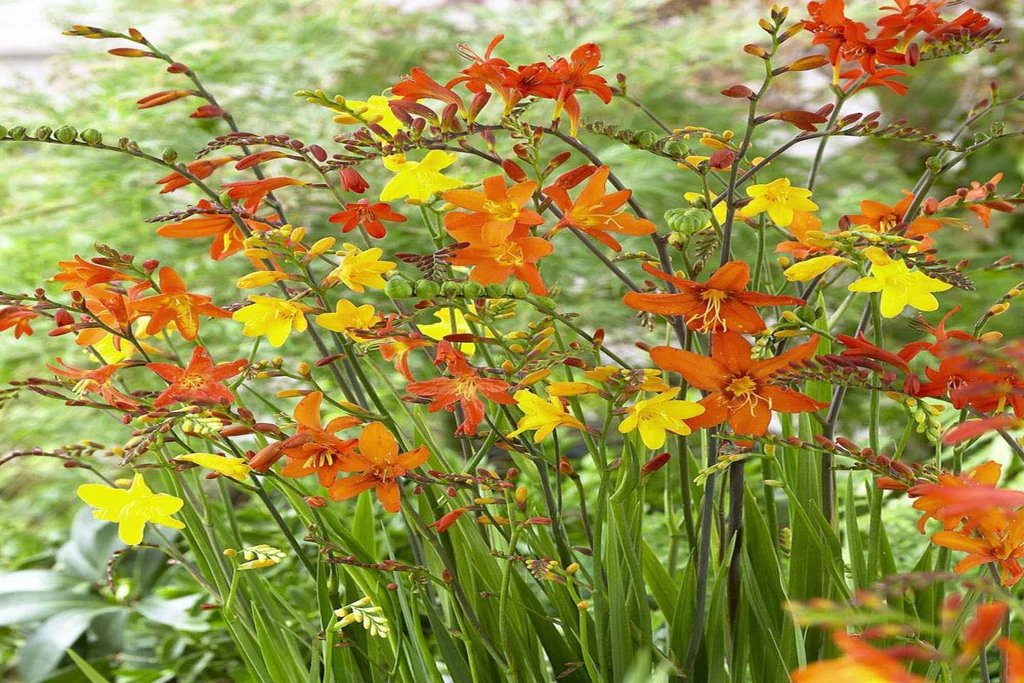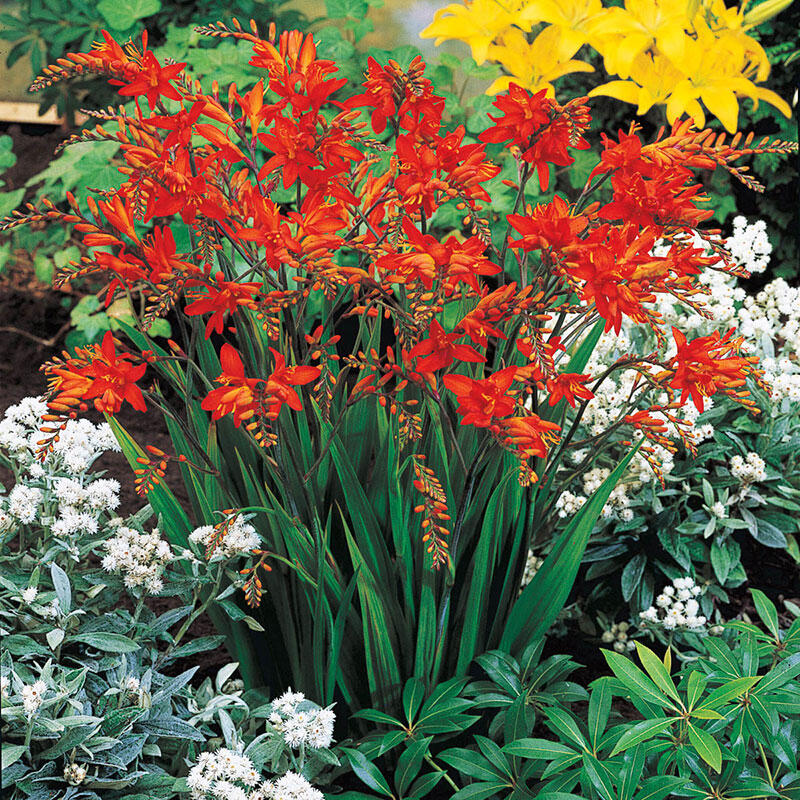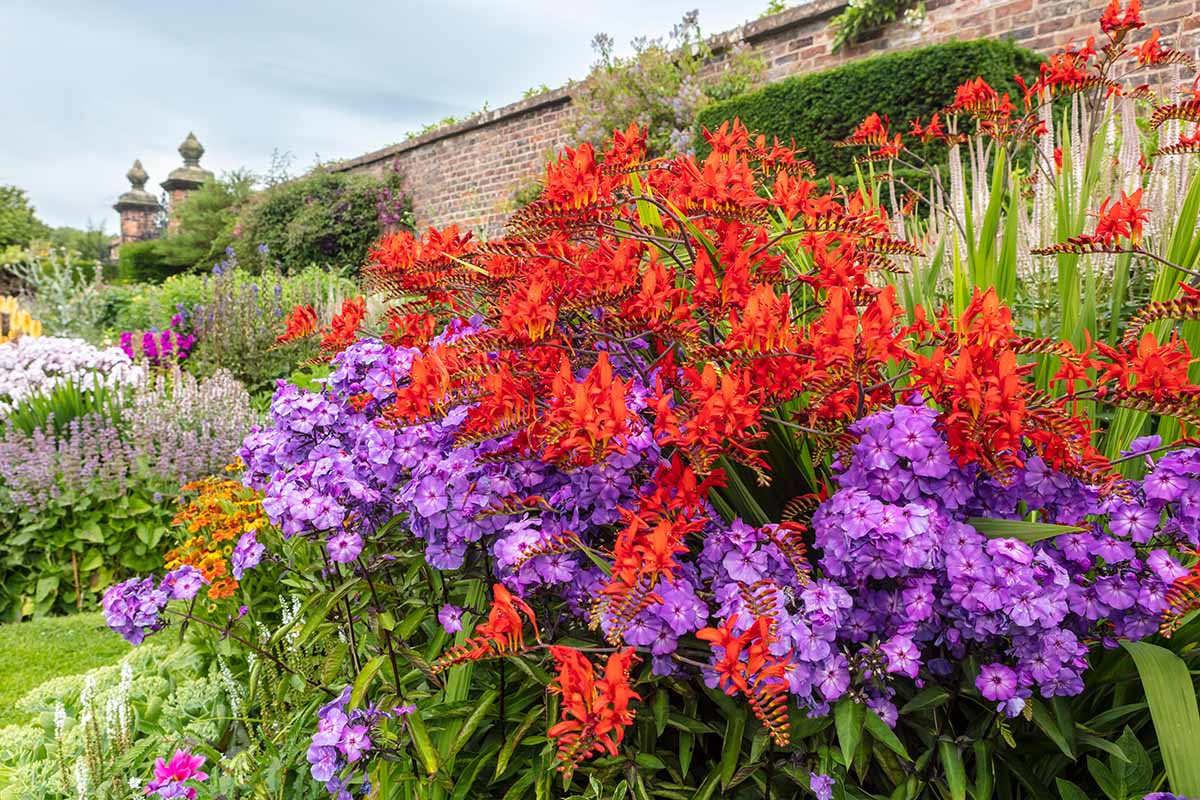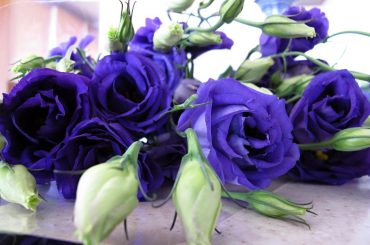Table of Contents
Have you ever planted crocosmia bulbs in your garden? If you have, you might be excited about how long it takes for these lovely flowers to bloom. We’ll find the growth of crocosmia bulbs from the ground to beautiful blossoms. They remain hidden under the earth until the time is right.
We look into the factors that affect crocosmia’s growth time. We’ll also share some tips to help you speed up or slow down the process, depending on your gardening goals. So, whether you’re a green-thumb fan or just getting started with gardening, come along with us.
Let’s start the crocosmia bulb growing and find out how soon you can expect their lively blooms to style your garden.
What is Crocosmia?

Crocosmia, also called montbretia, is a pretty plant from South Africa. People everywhere love it for its bright trumpet-shaped flowers in red, orange, and yellow, which really beat up gardens. It also has leaves that look like skinny swords, adding a nice touch. To keep Crocosmia happy, plant it in plant pots with soil that doesn’t hold too much water and put it in a sunny spot in your garden or rock garden.
The best thing is that Crocosmia is low-maintenance, so it’s perfect for both new and experienced gardeners. In short, Crocosmia is a lovely plant known for its colorful flowers and graceful leaves.
Whether you want to make your garden more beautiful or need a plant that’s easy to care for, crocosmia, not flowering, is a fantastic choice. It looks amazing and is a breeze to keep in your garden.
How to Grow Crocosmia?

1. Choose the Right Location
Crocosmia flowers like lots of sunlight. So, when you plant them, find a spot where they can soak up at least 6 hours of sunlight daily. This will make them happy and help them bloom beautifully.
Whether it’s in a sunny garden or a partly shady place, make sure they get their daily sun. Crocosmia is pretty laid-back, but giving them some sun-love will help them grow well and make your outdoor area look nice.
2. Well-Drained Soil
To grow crocosmia flowers nicely, pick a place with soil that lets water flow easily. If your soil is thick and holds too much water, no worries. Just mix in some compost. This helps your crocosmia grow well by stopping too much water from drowning their roots.
Just dig a hole, put your crocosmia bulbs or plants, and mix in the compost with the soil. This way, your crocosmia will have a good place to grow their pretty flowers. Remember, good drainage is important for happy crocosmia in your garden.
3. Planting Deepness
To plant crocosmia flowers, dig holes about 2-4 inches deep in your garden soil. These holes are where you’ll put the crocosmia corms, which are a bit like bulbs. Make sure to leave about 4-6 inches of space between them.
This way, the plants have enough room to grow without being too close. After putting the corms in the holes, cover them with soil and give them a good drink of water. Crocosmia flowers come in pretty colors and look lovely in your garden.
4. Watering
To make your plants happy, remember this: not too much water, not too little. When they’re growing, keep the soil a little wet, not super wet. In winter, when they’re taking a break, they are waterless and let the soil dry a bit. When they’re active, give them a small drink.
When they’re resting, don’t give them much water. Adding the right plant fertilizer at suitable intervals is like following their natural rhythm. Your plants will do great, and you’ll be a fantastic plant parent.
5. Mulching
Improve your garden easily with mulch. It helps in two ways. First, it keeps the soil wet, so your plants won’t get thirsty, especially on hot days. Second, it stops annoying weeds from growing. When you cover the ground with mulch, it acts like a shield, blocking sunlight that weeds need to grow.
Mulch not only saves water, so you don’t have to water as much, but it also saves you time because you won’t need to pull out as many weeds. Plus, it makes your garden look neat and clean. So, get some mulch and give your garden some extra care.
6. Fertilize
In spring, give your crocosmia plants some all-purpose plant food. It’s like their yearly treat. This food helps them grow strong and make lots of beautiful flowers. So, remember to sprinkle some food around your crocosmia plants, and you’ll see them bloom beautifully in your garden.
7. Divide
To keep your plants healthy and looking their best, it’s a good idea to separate clumps with too many plants every few years. This helps them grow stronger and produce more beautiful flowers. When you see that the plants are getting too close together, gently pull them apart.
This allows each plant to have more space and nutrients to grow better. It’s like giving them space to stretch and breathe, which makes them grow better and have more pretty blooms. So, remember to give your plants some space now and then for a garden that’s full of life and color.
Conclusion
Growing Crocosmia bulbs can be exciting. These colorful flowers don’t take forever to show up. They take around 6 to 8 weeks from planting to sprouting. First, you plant them in the soil. Then, you wait and wait some more.
But don’t worry, they are doing their secret work underground. On average, it takes about one to two months for them to burst out of the ground. But remember, it could be longer or shorter, depending on where you live and the weather.
If you’re looking for a pop of color in your garden, consider planting Crocosmia bulbs. They won’t keep you waiting forever, and the colorful show they put on will be worth it.





